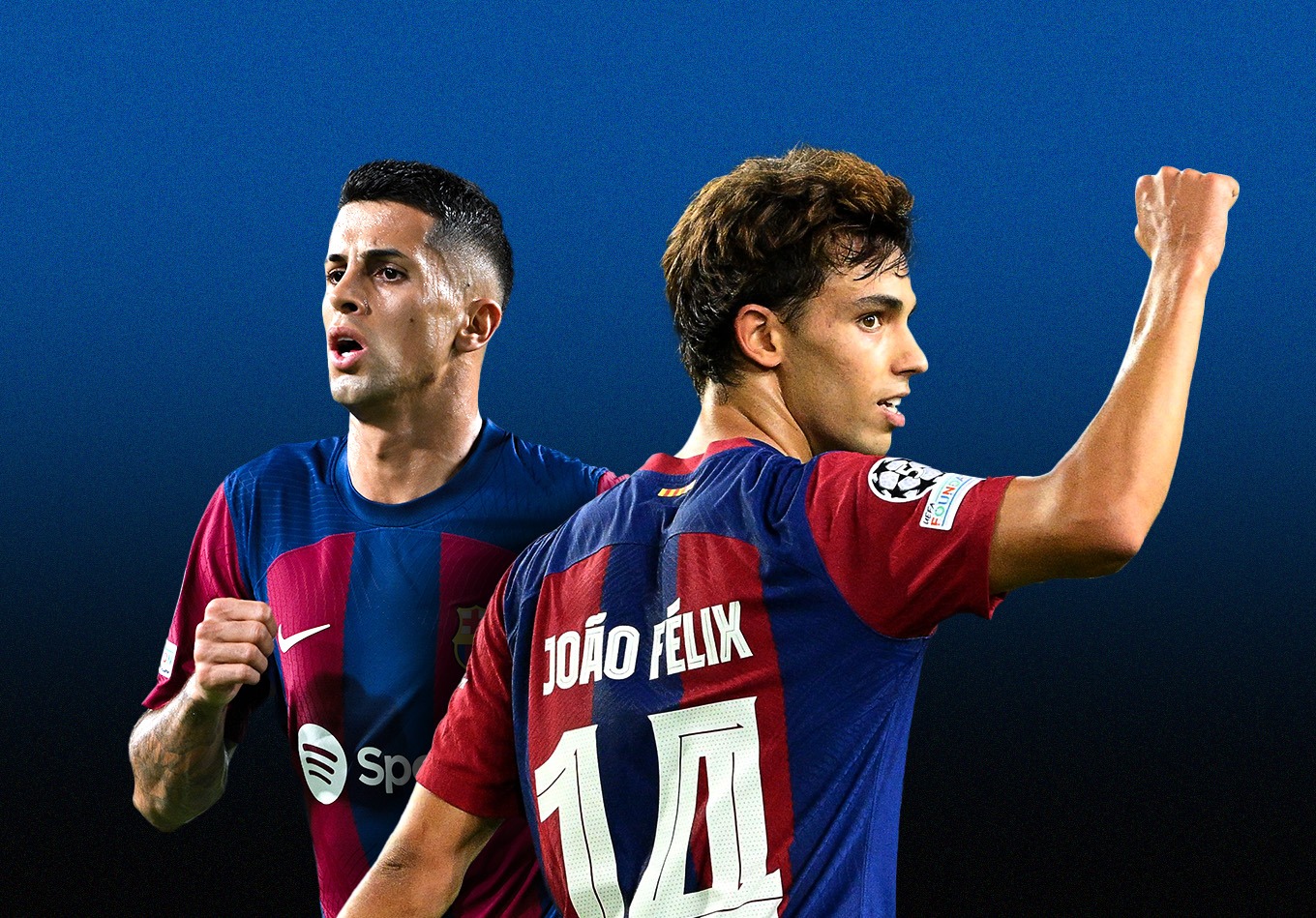This is just the story of a couple of Portuguese footballers who travelled and sometimes travailed through Europe in search of their footballing home. They both started at Benfica, have fallen out with coaches and then ended up at FC Barcelona on the same day at the end of a whirlwind transfer window.
“I think winning the Champions League with this team is possible,” João Cancelo said in an interview with Mundo Deportivo recently.
It has been less than three weeks since Barcelona signed both João Félix and João Cancelo but there is a buzz around the club that makes such talk sound like an attempt to will something into existence.
There are two types of nostalgia — restorative and reflective. Barcelona are perfectly located at the nexus of the two.
The former focuses on rebuilding the past and patching up memory gaps, trying to bring back the era of Total Football and the Cruyffian ideal.
The other dwells in longing and loss, the imperfect process of remembering. How can a club enjoy the present when they’re constantly either living in the past or dreaming away the present in the hope that tomorrow will bring back the good old days?
It’s exhausting. And it’s futile.
At the centre of this story are two Portuguese Joãos, but the side characters include a rich tapestry of players fitting into their rightful roles and a manager in Xavi seeking to find himself in Europe. He has already triumphed in Spain, having toppled Real Madrid last season.
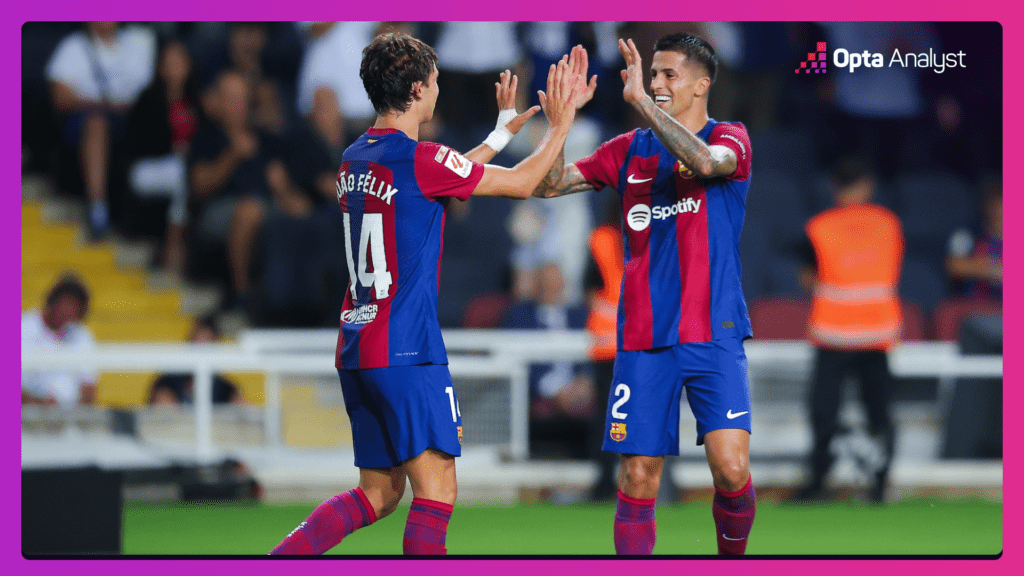
The only thing this story doesn’t have yet is an ending. It’ll come and it might be devastating or it might be everything Barça ever dreamed of. But for now, there is at least hope in the present.
João Felix and Cancelo have started two games together since joining Barcelona. The Catalans have won each of them 5-0. For the first time since Lionel Messi left the club, things look like they make sense.
But how have the two Joãos and Barça’s other signings got them to this point?
The TL;DR version of this article is that the two Joãos are very good at football and having them in your XI makes your team better. By playing João Félix as an attacker instead of Gavi, you also improve your chances of creating and scoring more goals. Forget advanced metrics, that’s just an obvious truth.
But there is more nuance to the picture. Even if we end up being wrong on this – after all it has only been two games – the theory behind how Barcelona are playing now makes sense. There’s a symmetry about their set-up with every piece of the jigsaw sitting in its rightful place.
After another summer of belt-tightening, Barcelona have come away with three of the steals of the summer. They landed João Félix, Cancelo and Ilkay Gündogan, and they also signed Oriol Romeu, a budget-deal Sergio Busquets, who solves a number of issues and adds depth in a position that is vital to Xavi.
Barcelona’s Problem with Positional Play
Barcelona have not always been able to implement the idea of ‘positional play’ with Xavi’s required level of proficiency. Positional play is essentially when the entire team moves as one. It’s like, if you will, a series of levers; if one player vacates an area of the pitch, another knows to step in. This leads to optimal spacing and multiple passing options at all times. It’s hard to defend when done right and it also keeps a nice defensive balance. Your overloads do not lead to overcommitting, which means you’re better in defensive transition, too.
Barcelona clung on to Jordi Alba, Sergio Busquets and Gerard Piqué for as long as they could because of their ability to understand what Xavi required. “I don’t have to say anything to Gündogan and Cancelo because they already had a coach [Pep Guardiola] who plays like us,” Xavi said after Barcelona had thumped Royal Antwerp in the Champions League.
One player who constantly stood accused was Frenkie de Jong. His centrality to Barcelona’s system was seen as part of a wider positional play issue. The Dutch midfielder was being asked to do too much; De Jong has the soul of a maverick midfielder but shines brightest when he is inventing within a system rather than being the sole source of creativity. He is disciplined but is at his best when operating at the outer limits of the constraints of the laws of positional play.
Xavi explains in his Masterclass on the Coaches’ Voice that his ideal formation contains a double pivot. Romeu and De Jong have been playing there thus far, and the latter touched the ball more often in his first two games this season (150 vs. Getafe and 135 vs. Osasuna) than he did in any single match in 2022-23. He also attempted 11 take-ons in the opening four games of the season. In short, he was being asked to get on the ball constantly and make things happen.
Now, with the additions of João Félix and Cancelo, he’s only attempted one take-on in the last two games, while his average touches per 90 have fallen in those two matches as well.
De Jong is no longer the centre of Barcelona’s tactics but he is still central to bringing this team success.
How João Cancelo Improves Barcelona
Cancelo has only played 197 minutes for Barcelona so far, but he is averaging 91.4 touches per 90. Only the two centre-backs (Jules Koundé and Andreas Christensen), Frenkie de Jong and Romeu average more than that. What’s even more important is how advanced those touches are. Cancelo is averaging 47.5 touches per 90 in the opposition half, which is the fourth-highest in the team behind De Jong, Romeu and Gündogan.
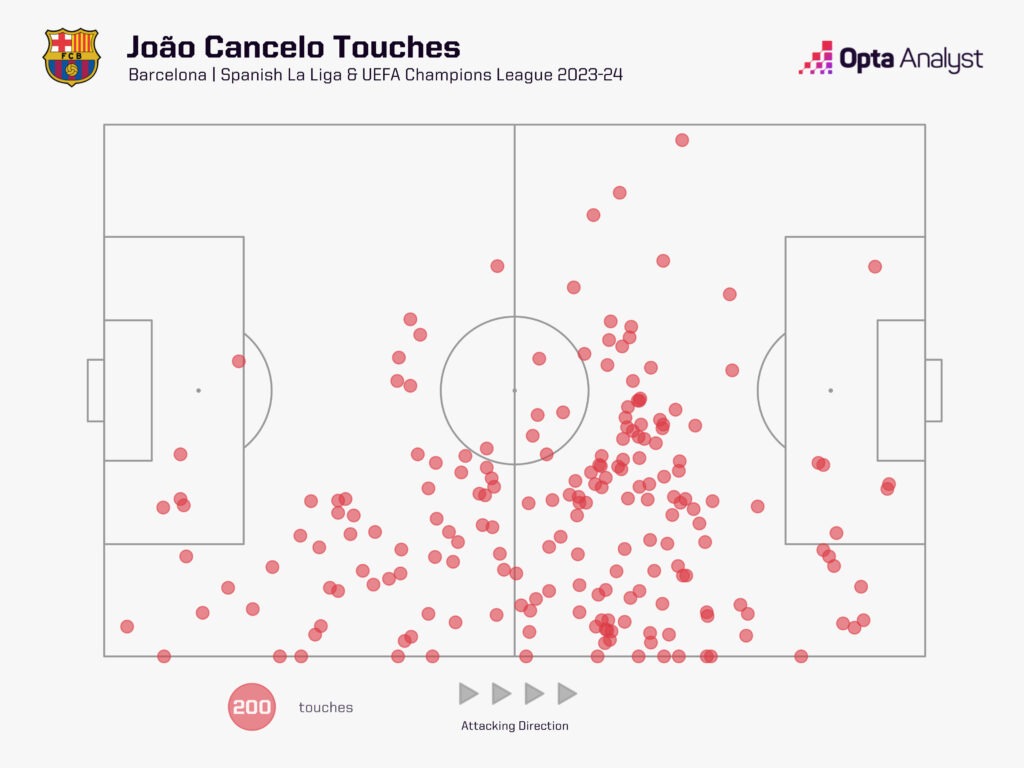
His touch map since joining Barcelona shows a player who is nominally a right-back but is doing much more than that. Before his arrival, Koundé or Ronald Araújo were deployed at right-back or centre-back, and the pair did not have much bandwidth for operating outside of those traditional positions.
Now, Cancelo plays as a wing-back but can also step into midfield alongside De Jong to form a double pivot or step in alongside Romeu – with De Jong further ahead – when Xavi goes more defensive.
Cancelo has immediately walked into a high-volume, multi-purpose role. So far, he’s been involved in 6.4 attacking sequences per 90 minutes this season, which is the sixth-highest in the team.
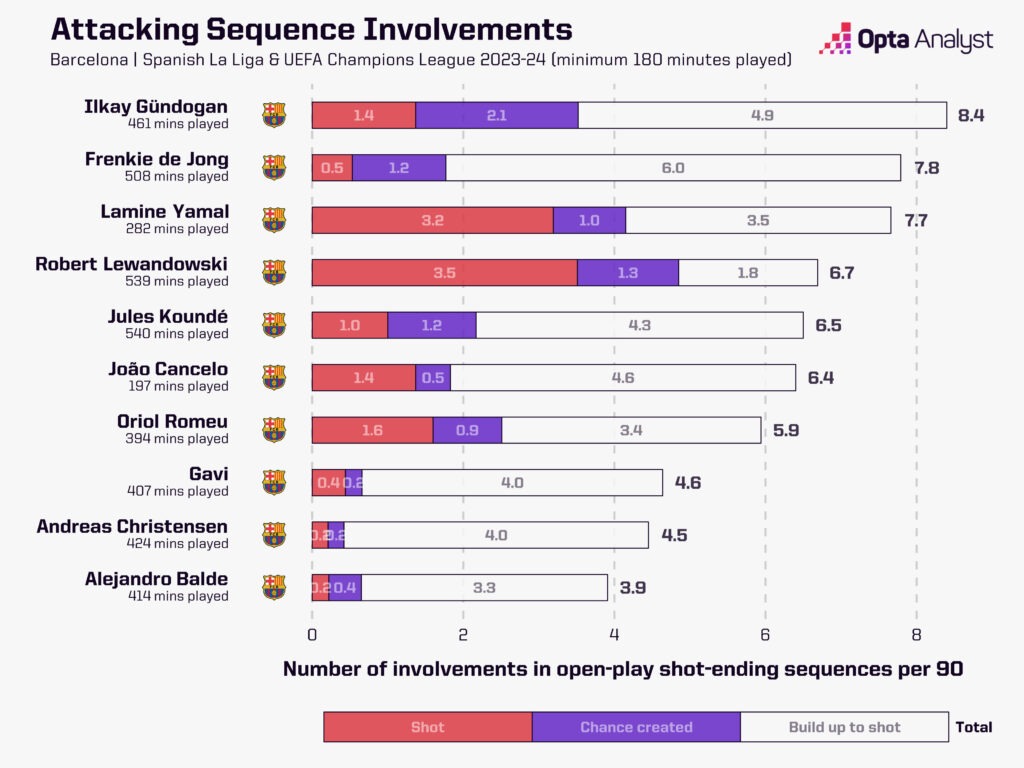
How good is Cancelo? João Félix is unequivocal: “He’s really good, in terms of quality I think he is the best full-back I have played with. He has the quality of a 10 and he likes to play as a 10. When he finishes up, he says he wants to go and play as a 10 with the team in his hometown.”
João Félix in His Rightful Position
The other João, João Félix, was born to play in a team implementing positional play, namely with him as the left-sided attacker. He told Mundo Deportivo recently that he took a significant pay cut to move to Barcelona, where he could play his style of football and enjoy being on the field again.
One of the reasons he struggled so much at Atlético Madrid was the lack of movement ahead of him, and his role as a midfielder rather than a wide creator. In this Barcelona team, he is given licence to roam (within the constructs of positional play) to manufacture touches for himself. In one way it is more robotic but in another, the movement makes him almost impossible to defend – if a team decides to man-mark him then they’ll be pulled all over the place, their shape twisted into a pretzel within minutes.
João Félix says it’s going better than even he expected and he now has three goals and an assist in just 142 minutes. He only scored five goals and registered three assists in 740 minutes over half a season with Atlético Madrid in 2022-23.
The only thing Diego Simeone seemingly couldn’t abide was João Félix’s lack of defensive willingness. But even early on, the effort is there under Xavi. That might fade with time and there are occasions when he seems to switch off before catching himself and sprinting back towards his own goal with the echoes of Simeone’s criticisms ringing in his ears.
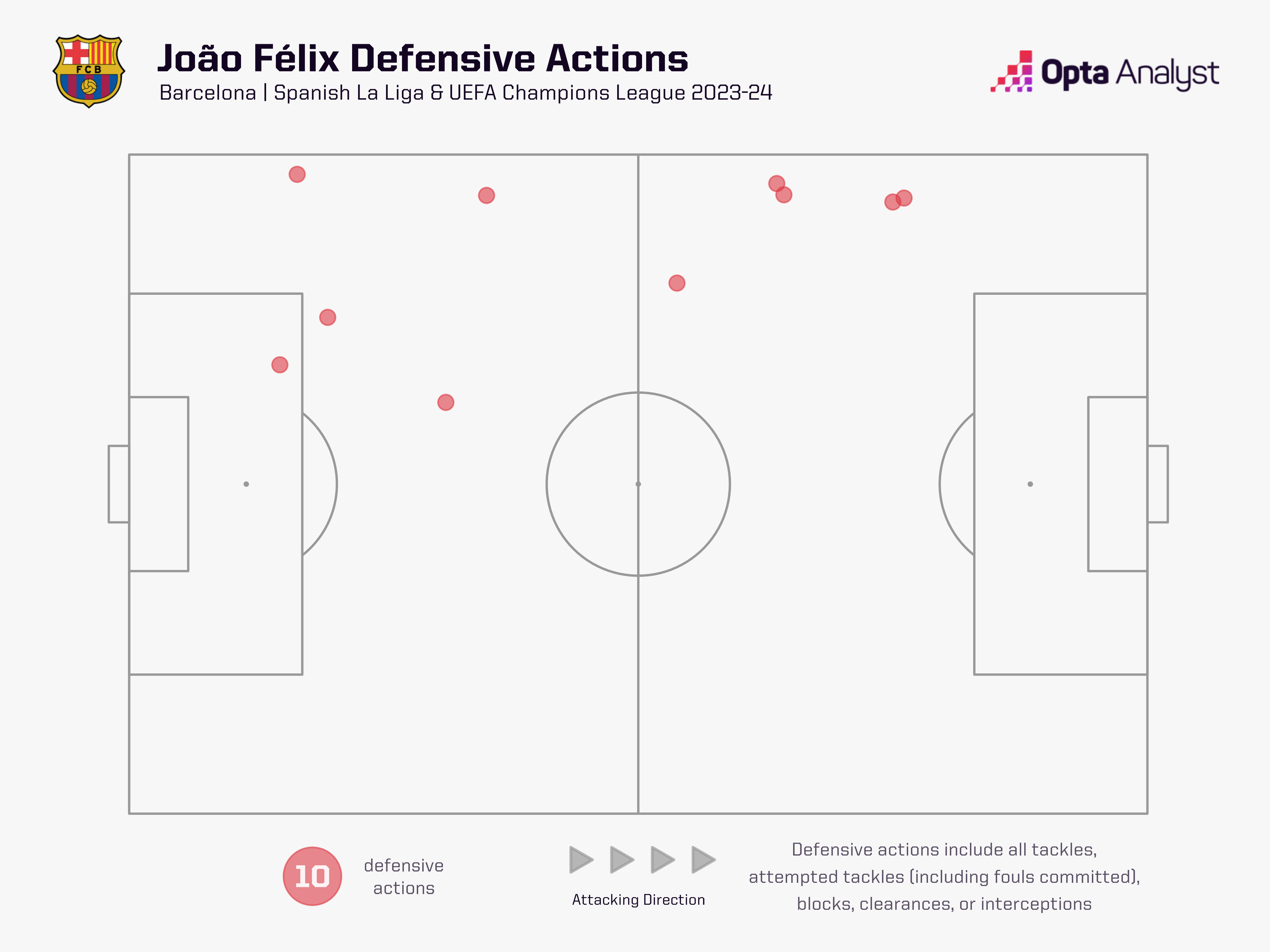
The Knock-on Effects
Perhaps more important than what Cancelo and João Félix bring is how they affect things around them.
Gavi was one of the biggest losers during the months and years of constant reshuffling by Xavi. The gifted but sometimes confusing central midfielder looked out of place as a left winger. But now that João Félix is there to play on the left, Gavi can move inside, where he is far more comfortable.
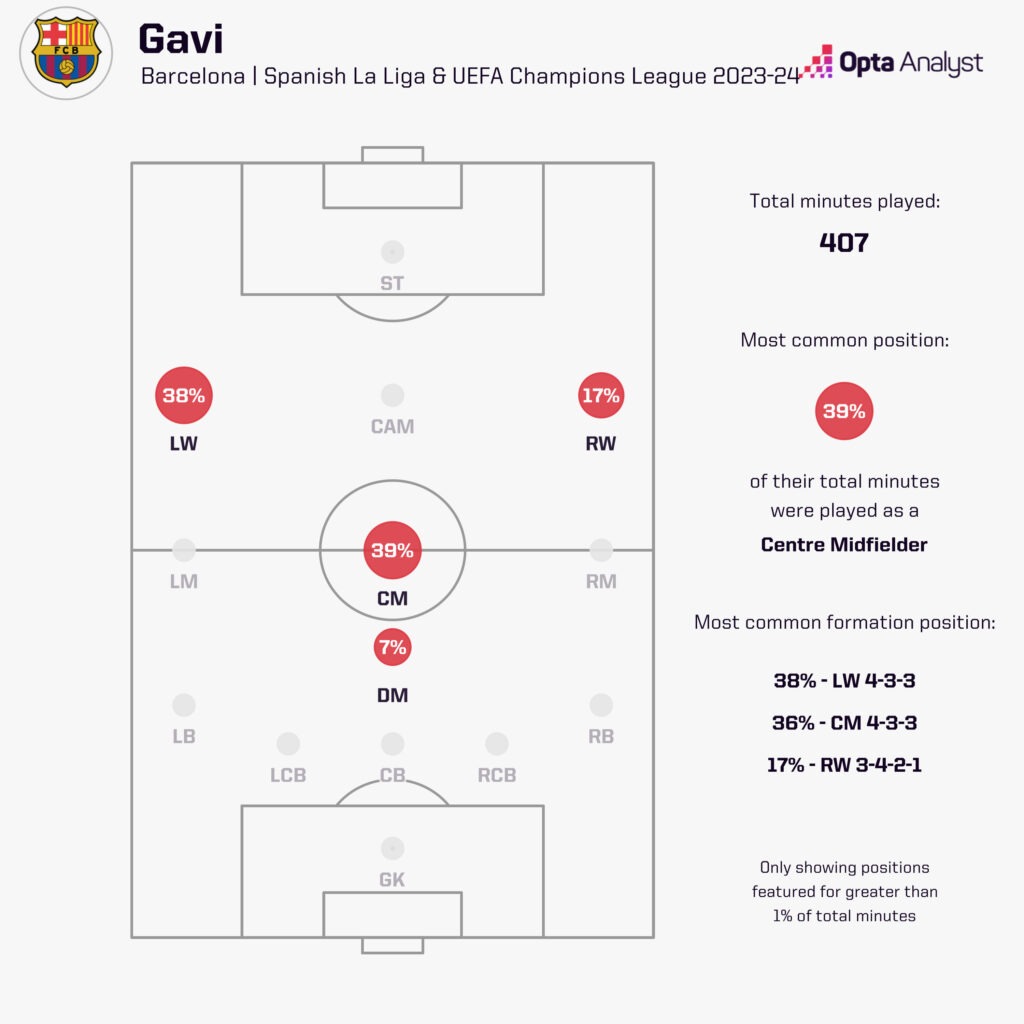
Gavi gets naturally drawn into the middle and it’s here where he can truly excel. From central areas, he can arrive late into the box and pick out passes in a penalty area teeming with defenders.
When you compare that to João Félix, who doesn’t like the hustle and bustle of the middle of the field, it dovetails perfectly. João Félix is at his best playing intricate give-and-goes around the penalty area, egging defenders to try and take the ball off him. We are talking just a few metres of the difference in positioning but it’s crucial to how both players interpret the game.
On the other side of the attacking line, we are likely to see a right wing by a committee including Raphinha, Ferran Torres and Lamine Yamal — three wingers with some similarities but different profiles to be used depending on what the game needs. Where once Ousmane Dembélé prowled, now more peripheral players operate. Robert Lewandowski has benefitted from having João Félix next to him in attack and with Cancelo feeding him the ball.
Against Royal Antwerp, Xavi played another riff on his starting eleven from the one that hammered Real Betis 5-0 on Saturday night. He left Romeu out and played De Jong as the sole defensive pivot with Cancelo drifting inside to occupy that space when necessary. He must have figured, correctly, that having both Romeu and De Jong on the team was overkill. It’s the first time this season he has started the same backline in front of Marc-Andre ter Stegen in consecutive games.
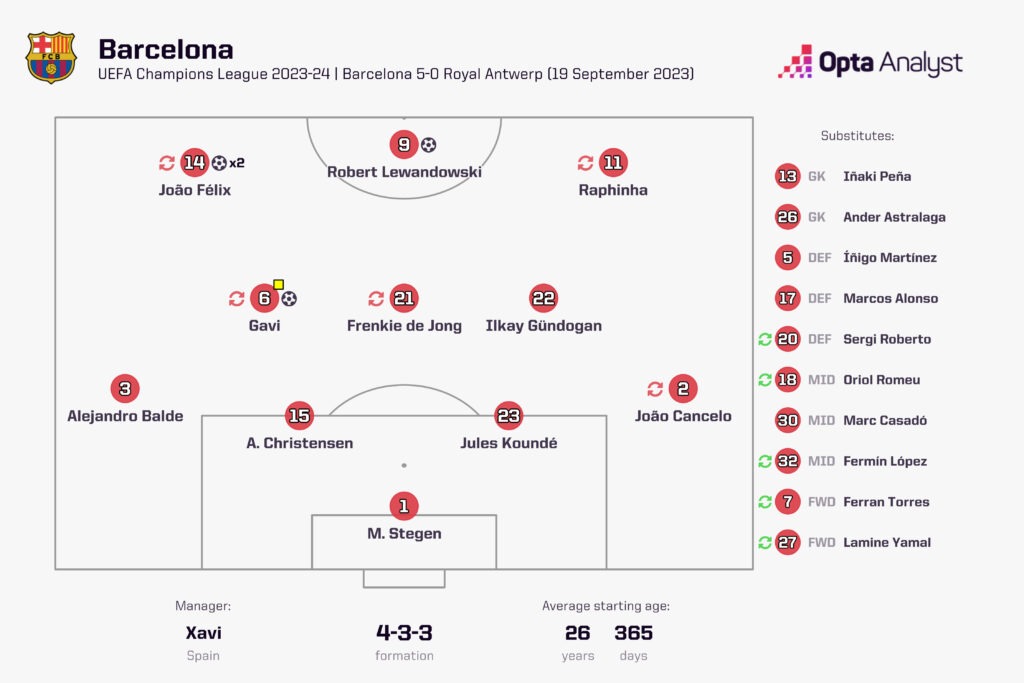
Further up the pitch, he opted for Gavi and Gündogan as the interiors ahead of De Jong and with Raphinha, Lewandowski and João Félix as the three attackers. Gündogan is a superb footballer and his ball into João Félix for the Portuguese’s opening goal was stunning.
Xavi still has his double pivot, he still has his width, he still has three attackers. And it’s all done in the sacred 4-3-3 formation.
It’s been a never-ending cycle of problems for Xavi as the manager of Barcelona. For the first two and a half seasons, he was restricted by financial constraints so strict he had to ask permission to buy a bag of crisps, let alone a squad capable of competing among Europe’s finest.
Now, he actually has options.
We are nearly 2,000 words into the article and we haven’t even mentioned Pedri, a player who makes any team in the world better. Barcelona are eying the Clásico on 28 October for his return, while competition for places grows even more fierce. The permutations in midfield would now make your head spin and Araújo still has to come into the team, too. Vitor Roque, an 18-year-old striker with a €500 million release clause, will also join in January. This is a squad now that is ready to compete.
At least when Xavi puts his head on his pillow at night now, he will be turning over the possibilities he can conjure up rather than the restrictions imposed by his squad and the technical and physical limitations of those in it.
The future is here for Barcelona, who can finally free themselves from the shackles of nostalgia. Even if it’s just for now.
Enjoy this? Subscribe to our new football newsletter to receive exclusive weekly content. You should also follow our social accounts over on X, Instagram, TikTok and Facebook.
